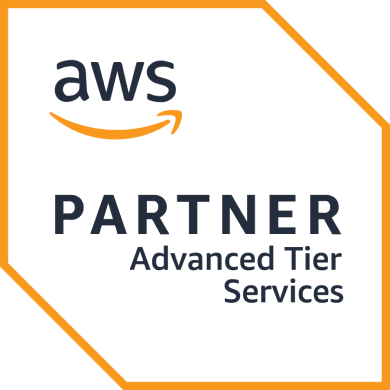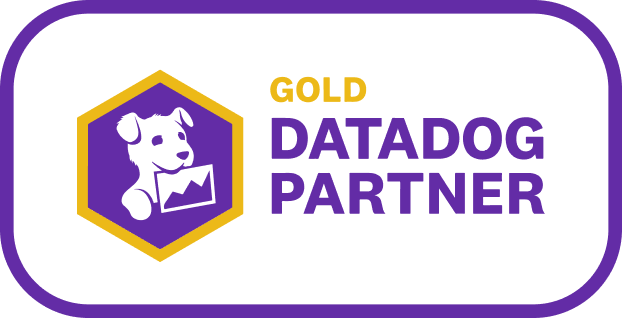How Datadog and AWS Improve Retail Site Performance During Peak Demand
TL;DR
- Downtime drains revenue. Global 2000 companies lose over $400B annually to outages. Even a two-second checkout delay can lead to abandoned carts and lost sales.
- Datadog provides real-time visibility. Its monitoring, APM, and tracing tools let retailers detect performance bottlenecks early and maintain consistent uptime during peak demand.
- AWS powers scalability and resilience. Auto-scaling, load balancing, and global edge services ensure stable performance when traffic surges, while compliance frameworks (PCI DSS, SOC 2, ISO 27001) keep transactions secure.
- Together, Datadog + AWS deliver end-to-end optimization. Datadog highlights anomalies across 90+ AWS services, and AWS automatically responds. This helps you scale resources, balance traffic, and optimize costs.
- Nova Cloud unites both systems. As a certified AWS Advanced Tier Services Partner and Gold Datadog Partner, Nova Cloud integrates observability and infrastructure. You can expect proactive monitoring, automated recovery, and cost control for retail sites.
- Real-world impact: Nova helped MobilityADO migrate from Oracle Cloud to AWS serverless in under four weeks. This led to faster releases, lower costs, and seamless scalability.
- Key results for retailers: Faster page loads, fewer incidents, reduced cloud waste, and more consistent checkout experiences during peak sales.
Work with Nova Cloud to turn your AWS and Datadog stack into a performance engine. Schedule a call today.
Downtime isn’t just an inconvenience in retail… it drains millions. According to Splunk, global 2000 companies lose an estimated $400 billion annually from outages, with single incidents averaging $49 million in lost revenue.
For you, even a two-second delay at checkout can cause abandoned carts and lost sales. That’s why high availability, fast recovery, and accurate infrastructure monitoring matter.
Nova Cloud, as both an AWS and Datadog partner, helps retailers tackle these exact challenges.
We’ve seen global leaders like MobilityADO strengthen their systems with AWS services, and in this article, you’ll see how the same applies to your retail site performance.
To understand the impact, let’s first look at the role Datadog and AWS play individually.
What Is Datadog?
Datadog is an observability platform that gives you real-time visibility across infrastructure, applications, and logs. It’s just one system you can use to track performance from the code level up to the user experience. So instead of juggling separate monitoring tools, you see a single service map that connects every dependency in your environment. This is important in retail, where checkout slowdowns or cart sync delays translate directly into lost revenue.
You also gain application performance monitoring with the ability to trace requests across APIs, microservices, and databases, so you know exactly where latency starts. Results from Datadog customers highlight the scale:
- Orderbird manages 16,000+ POS devices with end-to-end visibility.
- PlayStation Network supports 90 million active users monthly with optimized service.
- TravelSupermarket achieved 50% cost savings on cloud resources.
That kind of operational impact shows what’s possible for you, and it sets the stage for how cloud infrastructure powers these outcomes. To see what Datadog offers visually, you can check out this Datadog in 45 seconds YouTube video:
Pro tip: Nova Cloud’s cloud architects can review your AWS infrastructure and Datadog configuration to pinpoint the exact causes of latency and downtime. Schedule a call today to see how we can help.
Now, let’s look at how cloud infrastructure provides the foundation for these gains in retail.
What Is AWS for Retail?
AWS for retail is a cloud infrastructure built to give you scalability and resilience at the moments you need them most. Instead of overprovisioning hardware, you use Amazon Web Services to scale up and down instantly. That flexibility matters when promotions, holiday sales, or unexpected spikes drive massive transaction volumes.
The advantages are clear. You can:
- Handle peak traffic with auto-scaling across Amazon EC2 and managed services.
- Process payments with secure architectures aligned to PCI DSS and ISO standards.
- Expand globally with low-latency regions and edge services.
- Improve customer experience by keeping checkout fast and reliable.
And the numbers prove these benefits.
For example, businesses report that AWS provides up to 10× scalability on demand compared to traditional infrastructure. This allows thousands of servers to be deployed in minutes. That level of agility reduces downtime risk and gives you operational confidence during events that drive revenue.
Here’s how AWS for retail works:
Moving on, let’s see how pairing this with Datadog changes the picture.
Why Datadog + AWS Together?
Datadog and AWS together give you operational visibility and automated resilience that neither provides alone. Datadog delivers end-to-end monitoring, while Amazon Web Services supplies the infrastructure to act on those insights in real time.
Here are the ways the two systems work side by side:
- Unified visibility across the stack: Metrics, traces, and logs from more than 90 AWS services stream into a single Datadog dashboard. This includes Amazon EC2, RDS, Lambda, and Amazon EKS.
- Predictive scaling: Datadog detects unusual spikes in CPU Utilization or I/O before failures occur. AWS auto scaling policies respond instantly.
- Optimized cost control: Idle EC2 instances or oversized storage are flagged by Datadog, while AWS FinOps tools right-size resources for efficiency.
- High availability + resilience: When Datadog detects a failing node, AWS services like Route 53 and Elastic Load Balancing redirect traffic seamlessly.
- Security + compliance monitoring: Datadog’s monitoring, combined with AWS compliance frameworks (PCI DSS, SOC 2, ISO 27001), strengthens trust at checkout.
- End-to-end customer experience monitoring: Real user monitoring links directly to infrastructure performance, which gives you a clear business impact.
- Developer + ops alignment: Engineers resolve code-level issues with Datadog APM while operations teams adjust scaling in AWS. Nova connects both sides into one workflow.
With this joint approach, you move from reactive firefighting to proactive performance management, which brings us to the specific retail problems you face every day.
Common Retail Site Performance Issues [+Solutions]
Retail performance failures rarely come from a single weak point. They emerge when systems under pressure expose gaps in monitoring, scaling, or integration. Below, we’ll discuss the top recurring challenges that drain revenue for retail websites in our experience. We’ll also show you how Datadog, AWS, and Nova address them step by step.
1. Slow Page Loads During High Traffic
During peak events, slow page loads usually come from EBS disk I/O bottlenecks, database connection saturation, or a misconfigured CDN. Each second of delay compounds lost sales, as buyers abandon carts rather than wait.
And the reverse of the medal is also true.
A Think with Google study showed that even a 0.1-second improvement in mobile site speed increased retail conversions by 8% and raised consumer spending by nearly 10%. That finding reinforces what you already know: site loading speed directly drives revenue.

Datadog helps you see this in real time.
With page load monitoring and performance metrics down to the query level, it flags anomalies before they cascade into checkout failures. For example, when database response times spike, Datadog highlights the bottleneck so your teams know whether the issue is with queries, APIs, or infrastructure layers.
AWS then provides the scaling response. Services like Elastic Load Balancing, Auto Scaling Groups, and CloudFront CDN distribute traffic intelligently, add capacity as needed, and keep response times consistent under heavy load.
Nova Cloud makes this work seamlessly by integrating Datadog’s visibility with AWS’s scaling.
That way, you move from reacting after buyers complain to actively keeping site performance at the level your revenue model depends on.
Pro tip: Page speed also shapes revenue. If you’re weighing architecture choices, our guide on SFRA vs Headless shows how platform design also impacts retail performance.
2. Unexpected Downtime During Sales Events
Downtime during a major promotion is one of the fastest ways to lose revenue and customer trust. The causes are typically predictable, such as a single Availability Zone dependency or scaling policies that fail under sudden traffic spikes.
The truth is, a single hour of downtime for a large retailer like Amazon can cost around $34 million in lost sales. This shows just how high the stakes are when your checkout system stalls during a campaign.
Datadog pinpoints failures in real time, though.
For example, you get precise alerts on the exact service or dependency at fault. But it also has synthetic testing, instant outage alerts, and SLA dashboards. All these features surface disruptions before customers notice.
Instead of waiting for complaints, you see the failure point immediately, whether it’s infrastructure capacity, routing issues, or degraded services.
AWS then closes the gap with multi-AZ and multi-region redundancy.
Auto-healing capabilities restart unhealthy nodes and rebalance loads without manual intervention. That said, companies that have migrated core store systems to AWS report a 69% reduction in unplanned downtime. This proves how much resilience improves once infrastructure is architected for retail scale.
Nova Cloud’s role is stitching both sides together.
Aligning Datadog’s visibility with AWS recovery policies allows you to get proactive alerts and automated failover working as one system, so critical events no longer carry the same financial risk.
Pro tip: Downtime during peak sales also erodes reliability. For a deeper dive into how online retailers safeguard availability, see why eCommerce transaction reliability matters in our guide.
3. Inventory & Cart Sync Delays
When your cart or inventory systems fall out of sync, the buyer feels it immediately. For example, items appear out of stock, or carts fail to update. The causes usually trace back to microservice miscoordination or lag in queues like Kafka and SQS.
These issues frustrate users and, of course, bleed revenue. The average cart abandonment rate in online retail is close to 70%, which means 7 out of 10 shoppers never finish checkout. That scale of loss shows why delays in cart syncing aren’t a minor inconvenience but a major financial drain.
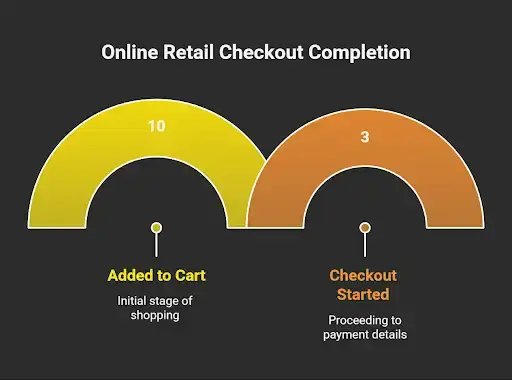
Datadog addresses the problem by tracing requests across APIs and services.
If a message queue slows or an API bottleneck stalls updates, you see it with full context.
However, slow performance compounds the problem. Many people leave after a two-second delay, and abandonment climbs sharply as lag increases.
AWS fills the operational gap with event-driven design.
AWS Lambda processes triggers in real time, while SQS and DynamoDB Streams maintain fast, reliable data sync across services. This keeps your inventory accurate and carts responsive even under heavy load.
The payoff is clear.
Retailers collectively lose about $18 billion every year to abandoned carts, but addressing sync delays with Datadog and AWS prevents a big share of that loss.
Nova Cloud’s role is connecting these tools into one flow, so you can detect latency at the service level and resolve it before it drives buyers away.
Don’t let cart or inventory delays cost you sales. Contact Nova Cloud now and keep every system aligned in real time.
4. Cart Abandonment from Latency at Checkout
Checkout is where performance failures hurt the most. Payment gateway lag, throttled APIs, or slow database writes can break the flow and force shoppers to quit mid-transaction.
Performance is one of the leading causes of drop-offs because 53% of carts are abandoned due to slow page load times. That means more than half of lost sales in retail trace back to speed rather than pricing or product fit.
Datadog addresses this by monitoring the buyer journey with real user monitoring.
You see where customers drop off in real time, whether at the payment API, the cart submission call, or the database write.
Otherwise, your revenue is at risk, and the numbers are stark. Even a one-second delay cuts conversions by 7%, while three-second delays drive a 20% drop, according to Fleexy. That’s a direct connection between system latency and revenue loss.
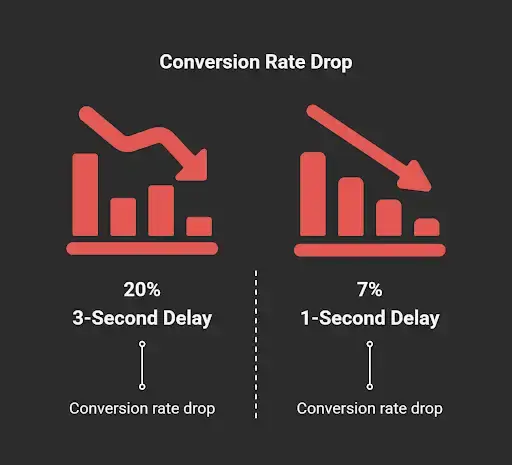
AWS has the elasticity to absorb these spikes.
With API Gateway and serverless functions like AWS Fargate and Lambda, checkout workloads scale instantly when demand surges. This keeps payment processing smooth without overprovisioning resources.
As a side note, the risk of revenue loss due to latency is even greater on mobile. So optimizing latency means protecting conversions across channels.
Nova Cloud integrates Datadog with AWS so you can prevent latency from eroding your revenue.
5. Cloud Cost Overruns During Promos
Retail events like Black Friday demand aggressive scaling, but the aftermath usually leaves you with unused resources still generating bills. Overprovisioned servers, idle databases, and storage left running after the surge quickly inflate operating costs.
The financial waste is not trivial.
According to the Private Cloud Outlook 2025 report, 49% of organizations estimate that more than a quarter of their public cloud spend is wasted, while 31% believe waste exceeds half of their total spend. For a retailer with a nine-figure revenue, this translates into millions lost annually to inefficiency.
And retail events can accelerate this waste.
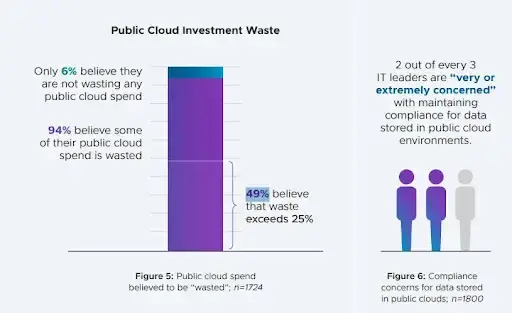
Datadog highlights where the waste occurs.
Cost anomaly reports and insights into underutilized compute resources show you which instances are draining budget without delivering value. Instead of relying on end-of-month billing surprises, you get live visibility into inefficiencies as they happen.
AWS complements this by giving you the right levers to optimize.
Auto Scaling expands and contracts capacity automatically, while Savings Plans and Spot Instances reduce baseline spend without sacrificing performance. Together, they create a dynamic balance (capacity where it’s needed, efficiency where it’s possible).
Nova Cloud connects Datadog’s cost analytics with AWS’s optimization tools.
This can help you turn raw insights into applied action. That alignment means you contain overspend during promotions and sustain profitability after the rush subsides.
Pro tip: For practical strategies and vendor comparisons, read our guide on the 10 best AWS cloud optimization consulting firms.
6. Blind Spots in Monitoring
When your monitoring stack is fragmented, blind spots are inevitable. Many retail teams run logs in Splunk, APM in New Relic, and fill gaps with custom scripts. The result is duplication, slow troubleshooting, and higher costs.
Besides, using lots of monitoring tools creates silos and complicates uptime management during peak sales events.
Datadog closes these gaps by consolidating infrastructure, logs, and traces into a single view.
We like Datadog because it has more than 900 turnkey integrations. That means it can give you unified observability across your full stack, from APIs to databases to third-party services. That level of coverage means you’re no longer relying on fragmented dashboards or guessing which tool has the right data.
The business impact of consolidation is measurable.
Nucleus Research found that moving to one observability platform:
- Cuts mean time to restore by 40-60%
- Improves application performance up to 3x
- Lowers total cost of ownership by eliminating overlapping tools and excess cloud spend
Those outcomes directly translate into lower downtime costs and faster releases.
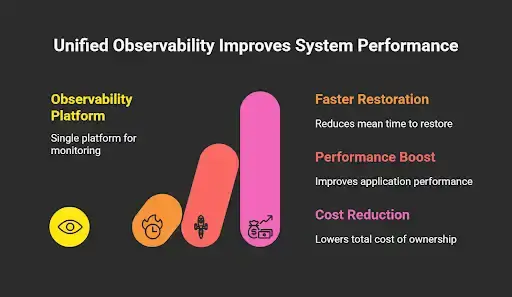
AWS enhances this consolidation by feeding CloudWatch metrics directly into Datadog dashboards.
Instead of managing two separate streams of insight, you see one version of the truth.
And Nova Cloud ensures that this integration is seamless. That way, your engineers spend less time stitching data together and more time improving the retail systems that drive sales.
Pro tip: If you’re evaluating service partners, our list of the 10 observability & APM agencies can help benchmark options.
7. Compliance & Security Risks
In retail, every transaction carries risk. Weak access logging, gaps in suspicious activity monitoring, or inconsistent policy enforcement can expose sensitive customer data.
The financial impact of those gaps continues to climb, and we see the effects every day.
The average cost of a data breach in 2024 reached $4.88 million, a 10% increase from 2023. This shows how quickly financial exposure grows when compliance and monitoring fail.
Datadog addresses these risks with built-in security monitoring and SIEM integrations.
It correlates logins, permissions, and unusual traffic patterns with infrastructure events, so you see malicious behavior before it escalates. For example, if a compromised account begins probing APIs or accessing unusual datasets, Datadog flags the anomaly in real time.
AWS complements this by providing defensive layers through GuardDuty, WAF, and Shield. Encryption and compliance frameworks like PCI DSS, SOC 2, and ISO 27001 give you the certifications auditors demand, while also hardening customer data at rest and in transit.
Nova’s role is weaving these tools together.
Connecting Datadog’s detection with AWS’s protective controls allows you to gain both visibility and prevention in a single operational model. The outcome is reduced breach risk, smoother audits, and fewer incidents that threaten customer trust and revenue.
8. Slow Release Cycles → Missed Market Opportunities
In retail, speed to market typically determines whether you capitalize on a trend or miss it entirely. However, manual testing and limited observability in CI/CD pipelines stall your releases. That’s how you get bottlenecks that keep new features, promotions, or fixes from reaching buyers.
That’s why we advise our clients to adopt more modern practices.
DevOps, for example, implies automated testing, continuous delivery, and built-in observability.
And 74% of enterprises adopting DevOps report at least a 2x reduction in release cycle time. This gives them a sharper edge in competitive markets.
Datadog is a good solution to slow release because it tracks deployment impact instantly.
Application and infrastructure metrics align with code pushes, so you know immediately if a release improves performance or introduces risk. Instead of waiting for customer complaints, you see the effect in real time.
AWS provides the delivery engine.
CodePipeline automates builds, tests, and deployments, while serverless services eliminate downtime during rollouts. This architecture supports smaller, more frequent updates without straining teams.
The 2024 DORA report makes the difference clear.
Elite-performing teams with mature CI/CD pipelines deliver code 127x faster, deploy 8x more frequently, and experience 182x fewer failures compared to low performers.

Nova Cloud connects these pieces so your teams can operate with speed and confidence.
The result is not just faster releases, but the ability to capture revenue opportunities that vanish if your site lags behind customer demand.
Datadog and AWS Case Study: MobilityADO
MobilityADO is one of the largest transportation providers in Latin America. It manages 8,000 buses, 280 BRT vehicles, and serves more than 500 million passengers annually.
The company depends on reliable ticket sales, which in practice mirrors the same pressures you face in retail eCommerce. That’s high volumes, time-sensitive transactions, and no margin for downtime.
When we first engaged with its team, their ticketing system ran on Oracle Cloud.
The architecture lacked resilience, outages exceeded SLAs, and performance issues slowed both sales and customer experience. For a business processing millions of transactions, the financial and reputational risks were unsustainable.
We migrated MobilityADO to AWS serverless in less than four weeks.
Using Amazon API Gateway and AWS Lambda, we rebuilt their API management system with built-in scalability and availability. Next, we layered Datadog monitoring on top to give their engineers full visibility into request latency, API performance, and infrastructure health.
The results were immediate.
Ticket purchasing became faster and more reliable, releases accelerated, costs dropped with a pay-for-value model, and the system scaled seamlessly from zero to peak demand.
Here, the lesson extends beyond mobility. The same model applies directly to retail, whether you’re selling apparel, groceries, or digital goods.
Nova Cloud for Datadog + AWS Integration
At Nova, we specialize in bridging Datadog and AWS so you can collect performance data and act on it. As an AWS Advanced Tier Services Partner and a Gold Datadog Partner, we bring certified expertise across both platforms. That means your monitoring layer and your infrastructure scale together, with no gaps between detection and response.
Our experience in retail and eCommerce gives us a direct understanding of the challenges you face.
This includes downtime costs that climb by the minute, abandoned carts from checkout delays, and wasted spend from idle cloud capacity. Combining observability with resilient cloud architectures allows you to contain these risks while enabling faster releases and better customer experiences.
We also offer nearshore delivery, which gives you access to highly skilled engineers in your time zone while maintaining secure, scalable infrastructure for global operations.
This model reduces communication friction and keeps projects moving at the pace your business demands, just like it did for MobilityADO.
If you’re ready to see how Datadog and AWS can work together for your retail systems, schedule a call with our team today.
Share this article
Follow us
A quick overview of the topics covered in this article.
- TL;DR
- What Is Datadog?
- What Is AWS for Retail?
- Why Datadog + AWS Together?
- Common Retail Site Performance Issues [+Solutions]
- 1. Slow Page Loads During High Traffic
- 2. Unexpected Downtime During Sales Events
- 3. Inventory & Cart Sync Delays
- 4. Cart Abandonment from Latency at Checkout
- 5. Cloud Cost Overruns During Promos
- 6. Blind Spots in Monitoring
- 7. Compliance & Security Risks
- 8. Slow Release Cycles → Missed Market Opportunities
- Datadog and AWS Case Study: MobilityADO
- Nova Cloud for Datadog + AWS Integration
